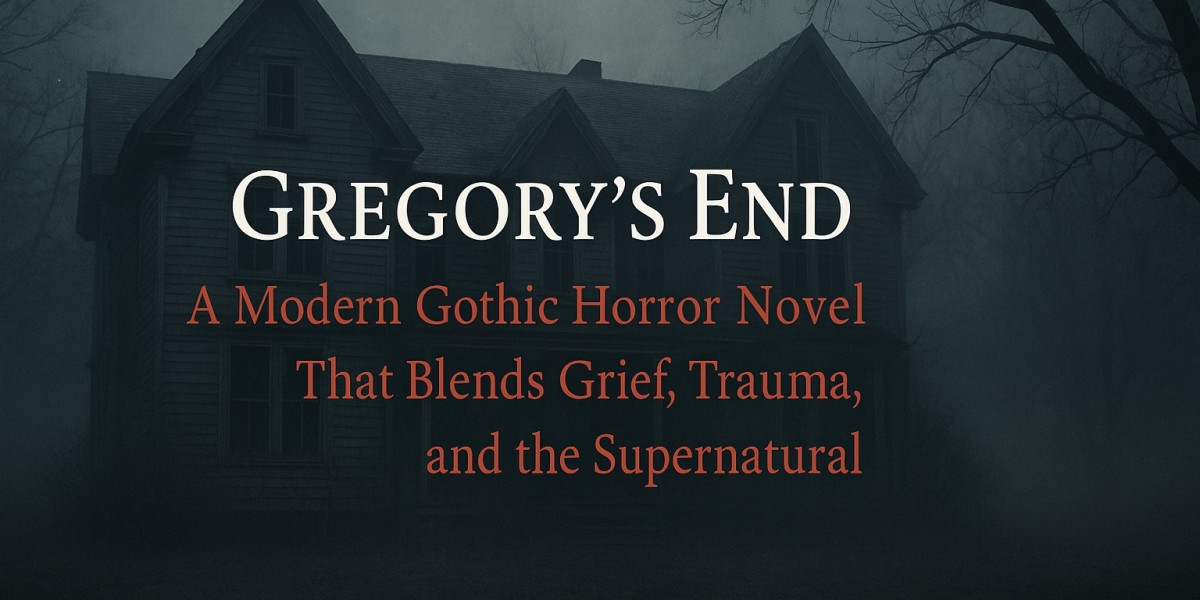Gothic horror has always been a genre rich in atmosphere, mystery, and psychological complexity. From decaying mansions to fractured minds, it reflects the terrifying beauty of human vulnerability. In her stunning debut novel, Gregory's End, Kat Burnham crafts a story that draws on classic Gothic elements while offering a modern psychological horror experience. This blog examines how the novel seamlessly blends grief, trauma, and the supernatural, earning its place among modern Gothic horror books and as a top psychological horror fiction book of 2025.
The Essence of Modern Gothic Horror
Traditional Gothic horror relied on castles, ghosts, and family secrets. Today, modern gothic horror takes these motifs and brings them into contemporary settings. The haunted house becomes a symbol of emotional unrest. The supernatural reflects psychological turmoil. And grief becomes the ghost that never leaves.
Gregory’s End fits perfectly into this modern mold. Set in a Victorian mansion nestled in the rural outskirts of California, the novel uses setting as a living, breathing character. The home is both refuge and prison, echoing the emotional journey of its characters as they try to escape the shadows of their past.
Gregory’s End: A Plot Rooted in Emotion and Mystery
At the center of Gregory’s End is Lauren, a mother struggling to heal from a personal tragedy. She, along with her partner Emma and their two children, moves into a grand but aging house with the hope of starting fresh. But the home has a past—and it doesn’t take long for that past to awaken.
Strange whispers, shifting shadows, and unexplained cold spots are only the beginning. As the novel progresses, Lauren begins to experience vivid hallucinations and moments of lost time. Is the house haunted, or is she unraveling under the weight of grief?
Burnham masterfully walks the line between reality and delusion, inviting the reader to question what’s truly happening. This ambiguity heightens the suspense and supports the novel’s reputation as a psychological horror fiction book with real emotional stakes.
Grief as the True Haunting
One of the most compelling aspects of Gregory’s End is how it treats grief not just as a theme, but as a force of nature. Grief haunts the characters in every scene—in their silence, their arguments, their dreams. Rather than relying solely on supernatural horror, Burnham explores how trauma shapes our perceptions, our relationships, and our sanity.
Lauren’s interactions with the house are deeply tied to her emotional state. Rooms become claustrophobic, mirrors reflect things that aren’t there, and voices whisper the words she fears most. In this way, the house becomes an extension of her inner chaos, turning Gregory’s End into a grief and trauma fiction novel as much as it is a ghost story.
The Supernatural Layer: Real or Imagined?
A key strength of Gregory’s End is its commitment to ambiguity. While there are clear supernatural elements—doors slamming, ghostly figures, objects moving—these are always filtered through Lauren’s increasingly unreliable perspective. This opens the novel to interpretation: Is the house truly haunted, or is Lauren suffering a mental breakdown?
This dual reading aligns with the best modern gothic horror books, where horror comes not just from what is seen, but from what is felt. The line between internal and external horrors is blurred, leaving readers with an unsettling uncertainty that lasts long after the final chapter.
A Literary Approach to Horror
Burnham’s writing style leans more toward literary horror than commercial thrillers. Her prose is deliberate, descriptive, and emotionally rich. She does not rush her narrative; instead, she builds a slow-burning atmosphere that gradually tightens its grip.
Themes of motherhood, identity, and emotional repression are woven seamlessly into the horror elements. Burnham invites us into Lauren’s headspace, making every terrifying moment feel deeply personal. This psychological depth elevates Gregory’s End beyond typical haunted house fare, placing it among the most promising emotional horror novels of the year.
Reception and Reader Reactions
Early readers have praised Gregory’s End for its haunting storytelling and emotional intensity. Many have noted its similarities to The Haunting of Hill House and Rebecca, both in tone and theme. The book has also been applauded for its realistic depiction of mental health struggles, especially as they relate to motherhood and past trauma.
Literary reviewers and horror bloggers alike have called it a standout debut. It is frequently recommended in lists of domestic horror fiction and cited as one of the best debut horror authors 2025.
A Story That Lingers
Perhaps the most powerful testament to Gregory’s End is that it lingers. Long after the book is closed, readers find themselves reflecting on its themes: How do we process loss? What do we do when the past refuses to stay buried? And can a place hold on to memories the way a person can?
The novel doesn’t offer easy answers. Instead, it gives us an experience—haunting, heartbreaking, and unforgettable. Kat Burnham has managed to turn a ghost story into a meditation on grief, making Gregory’s End a must-read for fans of modern gothic horror and psychological fiction alike.
Conclusion
Gregory’s End is more than just a debut novel—it’s a bold statement in the world of horror literature. By merging classic gothic tropes with raw emotional realism, Kat Burnham has created a story that is as intellectually stimulating as it is terrifying.
If you’re searching for a modern gothic horror book that explores the intersection of grief, trauma, and the supernatural, look no further. Gregory’s End is a psychological horror fiction book that deserves a place on every horror reader’s shelf in 2025.








